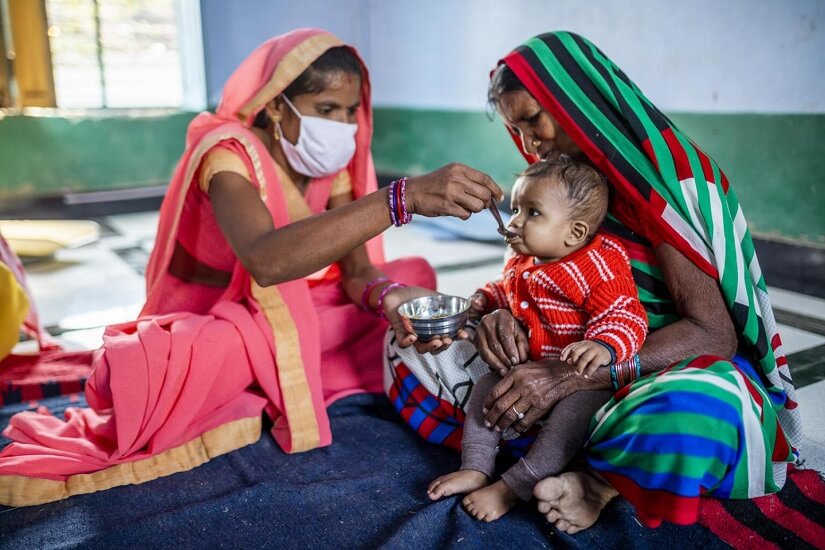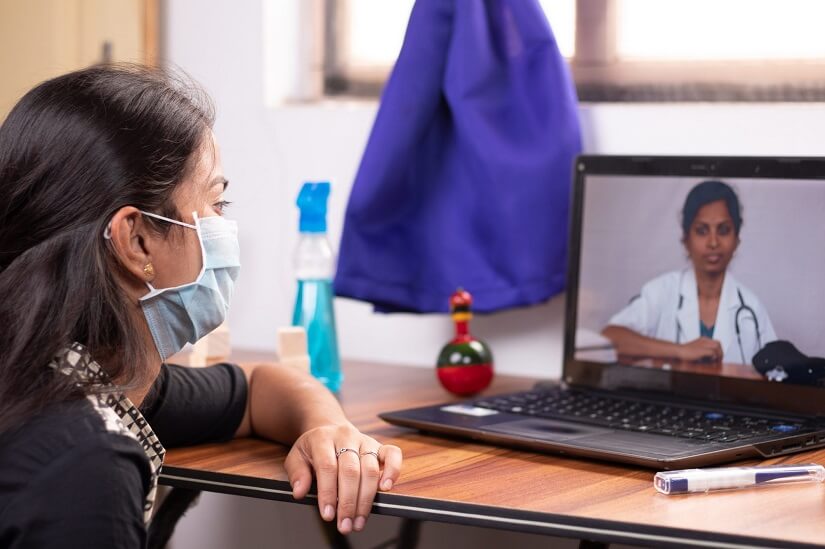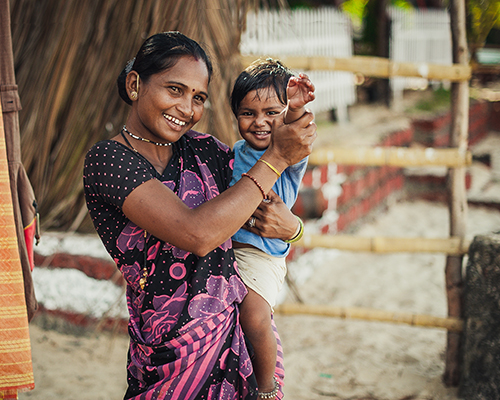World Health Day 2023 – Learnings from COVID-19 to Achieve Health for All in India

World Health Day is celebrated on 7th April annually to mark the anniversary of the founding of the World Health Organization (WHO) in 1948 and to advocate for pressing global public health issues by promoting a specific health-centered theme each year. This year, WHO celebrates its 75th anniversary with the theme of “Health for All.”
Health for All emphasizes the right to health as a fundamental right for all communities, the Universal Health Coverage (UHC) model, the empowerment of health systems through a primary health care (PHC) model, and emergency preparedness, amongst others.
While the WHO urges nations to follow through with these ideals, it also recognizes that the devastation caused by the COVID-19 pandemic, compounded by and overlapped with other humanitarian and climate crises, has created setbacks to the global agenda of achieving Health for All.
Defining health post the pandemic
In this context, World Health Day 2023 is a special occasion to reflect on the successes in public health in the last seven decades and an opportunity to reflect on public health preparedness for the global community, especially from the time of the COVID-19 pandemic.
The COVID-19 pandemic has brought to light significant deficiencies at various levels of healthcare infrastructure, supply chains, human resources, and public health systems. The Sustainable Development Goals (SDGs) Report 2021 states that although the progress in achieving the SDGs was slow before COVID-19, the pandemic has forced an additional 199-124 people into poverty, caused a loss of 255 million jobs, and may have caused an increase of 83-132 million people to experience hunger.
It has further disproportionately impacted the lives of the already vulnerable groups, impeding the achievement of equity in health for those who require it the most. In India, COVID-19 has had long-term negative impacts on livelihood, household dietary diversity, and increased poverty, resulting in declining resources to seek care and decreased access to maternal and child health care in the following years following the COVID-19 outbreak.

Reflecting on this, a few learnings drawn from the era of COVID-19 and India’s response to it can be revisited now and used as learnings in the spirit of enhancing Health for All. Some of these include the following –
Investing in building a robust healthcare workforce
The devastating impact caused by the acute shortage of healthcare workers (HCWs) during COVID-19 has brought forth the pivotal role of the healthcare workforce in building and sustaining healthcare for all like never before. Investing in and expanding the healthcare workforce in India, along with supporting ASHAs for better primary healthcare, can bring about significant improvements in healthcare services and outcomes. The shortage of HCWs results in poor access to healthcare services, particularly in rural and remote areas of the country. Investing in, supporting, and further expanding the healthcare workforce in India is essential to improve access to healthcare services for all.
Healthcare financing and innovative financing solutions –
During COVID-19, several raw material producers faced a shortfall of capital with meeting the demand for masks, personal protective equipment (PPE) kits, vaccines, et cetera. To address this, multiple stakeholders like – the Indian government, USAID, and other development agencies launched a blended finance scheme to support the delivery of this equipment.

Blended finance, a pathway to increase private sector funding through mobilization of public sector funding for development initiatives, had come up as an innovative mechanism to make capital available for the provision of equipment during COVID-19 and increase their reach to the most vulnerable in India and other low- and middle-income countries (LMICs).
Considering the current healthcare infrastructure gap in India, especially in the era of post-COVID-19 recovery, along with increasing budgetary spending on healthcare, innovative healthcare financing methods can be explored to support improvements in the healthcare capacity and infrastructure of India to meet the ambitious targets set out by the Sustainable Development Goals (SDGs) and to achieve Health for All.
Digitization of healthcare and telehealth:
During COVID-19, the Indian healthcare system adapted to shifting to telehealth in a myriad of ways, including but not limited to – video-consultations for follow-up care of mental health patients, teleophthalmology, telemedicine consultations for hematological issues for the continuation of therapy and modifications to drug dosage, and orthopedic conditions, etc.

Many studies emphasize the advantages of telehealth and indicate that it can and will continue to be a part of India’s healthcare systems well beyond the pandemic, mainly in terms of easy accessibility, patient satisfaction, et cetera.
While lack of infrastructure, technological illiteracy, and urban-rural divide poses challenges to expanding telehealth, the digitalization of healthcare services can significantly enhance access to healthcare services in India. By making it easier for people to get consultations, diagnoses, and treatments remotely, patients won’t have to travel as far to get to healthcare facilities, improving access to Heath for All.
Applying digital technologies can be particularly beneficial for individuals residing in remote areas where healthcare facilities are scarce, and transportation is challenging. Moreover, digitization can improve access to medical equipment, drugs, and other medical supplies that may not be available locally.
Healthcare facilities can leverage digital technologies in rural regions and underserved populations to access these resources, enhancing diagnosis and treatment, reducing medical errors, and improving patient outcomes.
In conclusion, the COVID-19 pandemic has exposed systemic disparities in healthcare access and outcomes, particularly for marginalized communities. As we celebrate the WHO’s 75th anniversary and march towards achieving Health for All, adequate public health preparedness calls for us to revisit the learnings from the era of COVID-19 and focus on building resilient health systems, investing in public health infrastructure, and addressing inequities in health for the most vulnerable groups.
References:
Filip, R., Gheorghita Puscaselu, R., Anchidin-Norocel, L., Dimian, M., & Savage, W. K. (2022). Global Challenges to Public Health Care Systems during the COVID-19 Pandemic: A Review of Pandemic Measures and Problems. Journal of Personalized Medicine, 12(8), 1295.
Bhadra, S. (2021). Vulnerabilities of the Rural Poor in India during the pandemic COVID‐19: Social Work perspective for designing sustainable emergency response. Asian Social Work and Policy Review, 15(3), 221-233.
Verma, G., Singla, N., & Singh, S. (2023). COVID-19, livestock supply chains and livelihoods in India: a review of impacts and implications. Journal of Agribusiness in Developing and Emerging Economies.
Travasso, S. M., Joseph, S., Swaminathan, S., John, A. T., Makkar, S., Webb, P., … & Thomas, T. (2023). Impact of the COVID-19 lockdown on household diet diversity in rural Bihar, India: a longitudinal survey. Nutrition Journal, 22(1), 1-12.
Sharma, S., Singh, L., Yadav, J., Gupta, U., Singh, K. J., & Rao, M. V. V. (2023). Impact of COVID-19 on utilization of maternal and child health services in India: Health management information system data analysis. Clinical Epidemiology and Global Health, 101285.
Rajkumar, E., Gopi, A., Joshi, A., Thomas, A. E., Arunima, N. M., Ramya, G. S., … & Abraham, J. (2023). Applications, benefits and challenges of telehealth in India during COVID-19 pandemic and beyond: a systematic review. BMC Health Services Research, 23(1), 1-15.
Sandhu, A., Agarwal, A., Kaur, P., Sharma, M., Sra, H., Singh, M., … & Singh, M. (2021). Evaluation of tele-rheumatology during the COVID-19 pandemic in Asian population: a pilot study. International Journal of Telemedicine and Applications, 2021, 1-6.
Sumaira Khan – Deputy Manager, Sambodhi
Nilay Sagar – Research Consultant, Sambodhi

